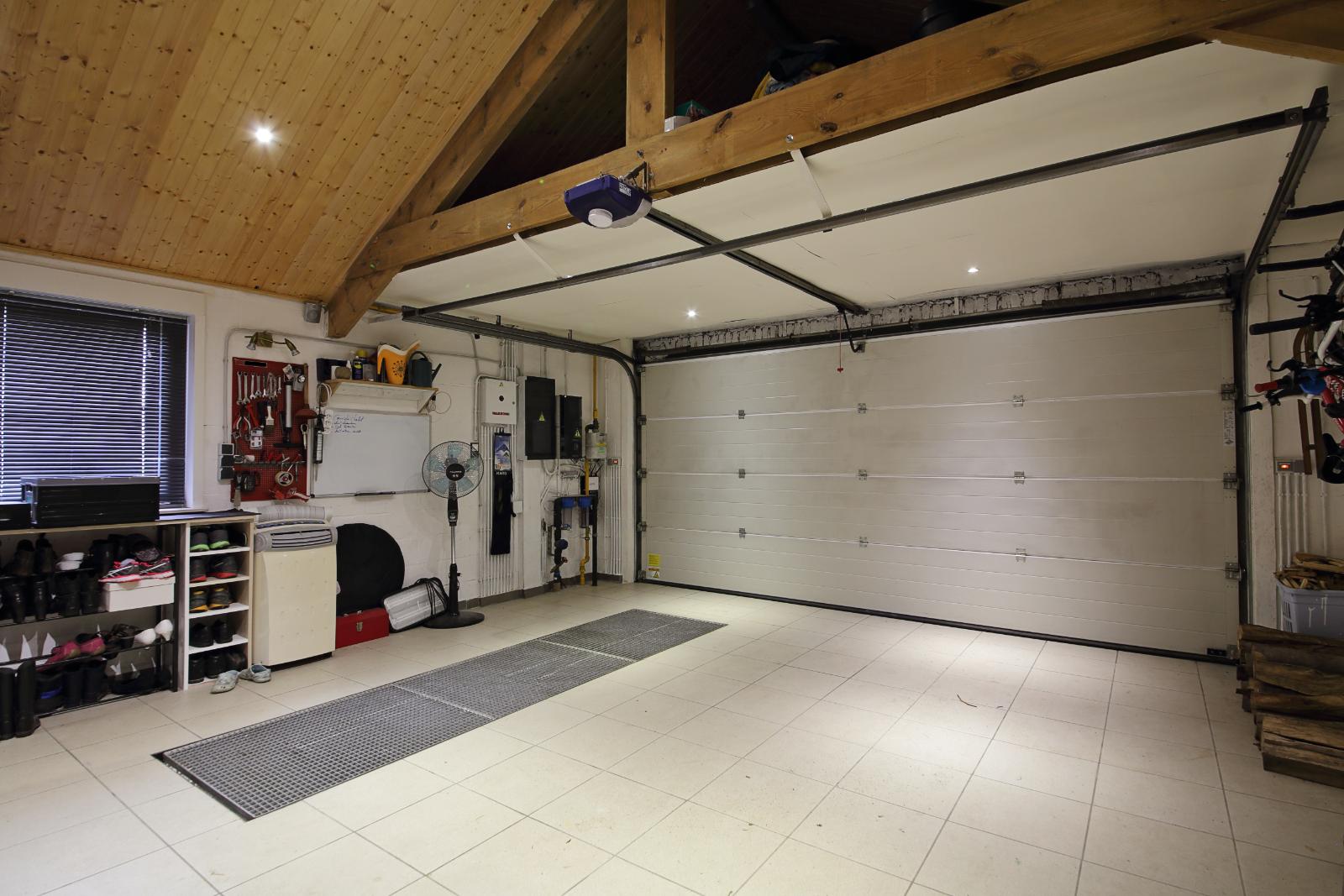
Contents
Many homeowners overlook the subtle signs that indicate their overhead door needs attention. Unusual noises or difficulty in operation can signal underlying issues that, if ignored, may lead to costly repairs. Understanding the key indicators of wear and malfunction is vital for maintaining peak functionality. If you’ve noticed any odd behavior from your door, it’s important to assess the situation before it escalates. What should you look for?
Key Takeaways
- Unusual noises during operation, such as grinding or squeaking, indicate potential mechanical issues requiring immediate attention.
- Difficulty opening or closing the door often signifies misalignment or wear that needs prompt assessment.
- Excessive vibration while operating may result from unbalanced components, indicating a need for maintenance and repair.
- Visible wear and tear, such as cracks or rust, can affect door performance and should be addressed promptly.
- Regular inspections for rust and corrosion are essential for prolonging door lifespan and maintaining functionality.
Unusual Noises During Operation
When your overhead door starts making unusual noises during operation, it’s a clear signal that something may be amiss.
These unusual sounds, whether they’re grinding, squeaking, or rattling, often indicate underlying mechanical issues that need your attention. For instance, a grinding noise might suggest that the rollers or tracks are worn out, while squeaking could point to a lack of lubrication on the moving parts.
Ignoring these sounds can lead to more significant problems down the line. Regular maintenance is essential to guarantee that your overhead door functions smoothly and safely.
You should consider inspecting the door’s components, such as the springs, cables, and hinges, to identify any wear or damage. If you’re unsure, consulting a professional can provide peace of mind.
Difficulty Opening or Closing
If you’re experiencing difficulty opening or closing your overhead door, it’s essential to assess the situation promptly.
This issue may stem from unusual noises during operation, inconsistent movement speed, or misaligned tracks and rollers.
Identifying these problems early can prevent further damage and guarantee your door functions smoothly.
Unusual Noises During Operation
Unusual noises during the operation of your overhead door can signal underlying issues that require immediate attention. Sound identification is essential in understanding the door mechanics at play. Recognizing these sounds can help you pinpoint the problem before it escalates.
| Noise Type | Possible Cause | Recommended Action |
|---|---|---|
| Grinding | Worn rollers or tracks | Inspect and lubricate |
| Squeaking | Lack of lubrication | Apply lubricant |
| Banging | Loose hardware | Tighten bolts and screws |
| Clicking | Misaligned components | Realign door parts |
| Humming | Electrical issues | Check wiring connections |
Inconsistent Movement Speed
Inconsistent movement speed of your overhead door can indicate a range of mechanical or electrical problems that need to be addressed promptly.
If you notice your door struggling to open or close smoothly, it’s crucial to investigate further.
- Check for worn-out springs or rollers.
- Consider implementing door calibration techniques.
- Explore speed adjustment methods for ideal performance.
These issues may stem from miscalibrated sensors or inadequate power supply, resulting in uneven speed.
Addressing these factors can improve your door’s functionality and extend its lifespan.
If you’re unsure of the necessary adjustments, consulting a professional can guarantee your overhead door operates reliably and safely, fostering a sense of security for you and your loved ones.
Misaligned Tracks or Rollers
Issues with inconsistent movement speed can often lead to the underlying problem of misaligned tracks or rollers, making it difficult for your overhead door to operate smoothly.
When you notice your door hesitating or jamming, it’s essential to conduct a thorough roller inspection. Misalignment can result from wear and tear or improper installation, causing unnecessary strain on the system.
Check track alignment by confirming the tracks are straight and level; any deviation can hinder performance. Regular maintenance and prompt attention to misaligned components can prevent more significant issues down the line.
Misalignment of the Door Panels
When your overhead door panels are misaligned, it can lead to various operational problems that compromise both functionality and safety.
You might notice issues like:
- Difficulty in opening or closing the door
- Increased wear on the door components
- Unusual noises during operation
To address this, regular door panel inspection is vital.
Start by checking for gaps between panels, which can signal misalignment.
Employ door alignment techniques to guarantee panels are correctly positioned.
If you find that the panels aren’t level or are unevenly spaced, it’s important to adjust the hinges and hardware to restore proper alignment.
Ignoring these signs can exacerbate the problem, leading to costly repairs or safety hazards.
Visible Wear and Tear
Misalignment of door panels isn’t the only issue to watch for; visible wear and tear on your overhead door can also indicate the need for immediate attention.
Inspect the door material—whether it’s wood, steel, or fiberglass—for signs of damage like cracks, dents, or rust. These imperfections can compromise the door’s integrity and functionality.
Pay close attention to the edges and joints, as these areas often experience the most stress and wear. Regular maintenance frequency can help you catch these issues early, preventing costly repairs down the line.
If you notice peeling paint or weather stripping that’s cracked or missing, it’s time to act.
Neglecting visible wear and tear not only affects your door’s performance but can also decrease your home’s curb appeal.
Inconsistent Response From the Remote
Have you noticed that your garage door isn’t responding consistently to the remote? This inconsistency can be frustrating and often indicates underlying issues. Here are a few key points to take into account:
Check the remote battery: A weak or dead battery can lead to sporadic operation. Replacing it might resolve the issue.
Look for signal interference: Other electronic devices or obstructions in the vicinity can disrupt the signal between the remote and the garage door opener.
Inspect the remote’s functionality: Verify that the remote is functioning properly by testing it at different distances or angles.
If you’ve addressed the battery and interference, but still experience problems, it may be time to consult a professional technician.
Understanding these factors not only enhances your convenience but also guarantees your safety and security at home.
Don’t let a faulty remote compromise your access; take action today to restore reliable operation.
Excessive Vibration While Operating
If you notice excessive vibration while operating your overhead door, it’s essential to identify the underlying causes.
This vibration can greatly impact the door’s functionality and may lead to further mechanical issues if not addressed.
Regular maintenance and timely repairs can help mitigate these problems and guarantee smooth operation.
Causes of Excessive Vibration
When your overhead door operates with excessive vibration, it can often signal underlying issues that need immediate attention. Identifying vibration causes is essential for maintaining safety and functionality.
Here are some common culprits you might encounter:
- Unbalanced Door: This can occur from wear and tear on the springs or tracks.
- Worn Rollers: Damaged or worn-out rollers can lead to uneven movement.
- Loose Hardware: Bolts and screws that have come loose can exacerbate vibration.
Addressing these vibration causes promptly can lead you to effective vibration solutions, ensuring your overhead door operates smoothly.
Regular maintenance checks can prevent these issues from escalating, fostering a secure environment for you and your property.
Impact on Door Functionality
Excessive vibration while your overhead door operates can greatly impact its functionality and longevity. When your door experiences this issue, it often leads to decreased door performance.
The vibrations can cause components to wear prematurely, leading to misalignment or damage that disrupts operational efficiency. You might notice that the door opens or closes unevenly, straining the motors and mechanisms involved.
As these parts struggle, you may find yourself facing increased repair costs and potential safety hazards. Paying attention to these vibrations is essential; they’re not just annoying but indicative of underlying problems that can meaningfully affect the overall performance of your overhead door.
Addressing these vibrations promptly can enhance both the lifespan and reliability of your door system.
Maintenance and Repair Tips
While addressing excessive vibration in your overhead door, regular maintenance and timely repairs are essential for ensuring ideal performance.
Implementing preventive maintenance can greatly reduce unnecessary wear and tear. Here are some effective repair techniques to contemplate:
Inspect and tighten all hardware: Loose bolts and screws can lead to increased vibration.
Lubricate moving parts: Use appropriate lubricants to minimize friction and noise.
Check the door balance: An unbalanced door can cause excessive shaking; adjust the springs if necessary.
Presence of Rust or Corrosion
Rust and corrosion are clear indicators that your overhead door needs immediate attention. When you notice these issues, it’s crucial to act quickly to prevent further damage.
Rust often forms on exposed metal surfaces, so regular inspections can help you catch problems early. Implementing effective rust prevention strategies, like applying protective coatings, can greatly extend your door’s lifespan.
If you encounter corrosion, a prompt corrosion treatment is necessary. Start by cleaning the affected area with a wire brush to remove loose rust. Then, apply a rust-inhibiting primer followed by a quality exterior paint to seal and protect the surface.
Make certain you check hinges and tracks regularly, as these areas are particularly susceptible to rust. By prioritizing these maintenance practices, you’ll not only enhance your door’s functionality but also foster a sense of belonging in your community, knowing you’re taking responsible steps to maintain your property.
Wrap-Up
In summary, your overhead door is like a well-tuned instrument; when it starts to falter, it’s essential to address the signs promptly. Unusual noises, difficulty in operation, and visible wear can lead to larger issues if ignored. By staying vigilant and recognizing these indicators, you can guarantee your door performs smoothly and reliably. Don’t wait for a complete breakdown—acting now can save you time, money, and the hassle of future repairs.
Recent Posts
3 Best Tips for Troubleshooting Garage Door Repairs
When your garage door isn’t functioning correctly, it can be frustrating and inconvenient. By focusing
Ultimate Guide to Residential Overhead Door Installation
When it comes to residential overhead door installation, making the right choices from the start
5 Expert Tips for Installing Residential Garage Doors
Installing a residential garage door might seem simple, but even small mistakes can lead to

